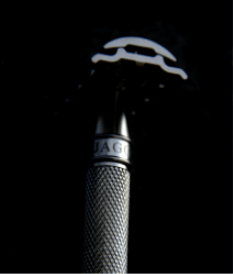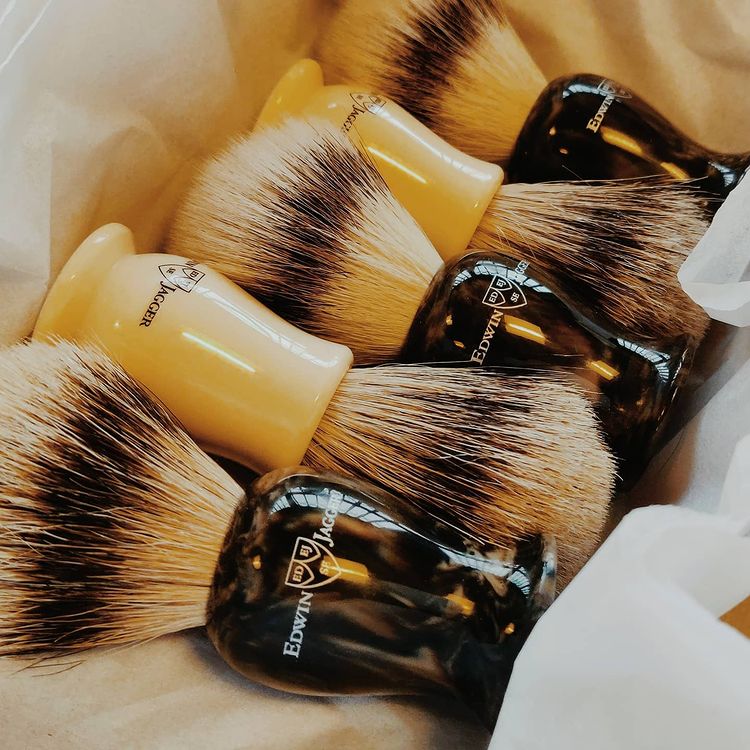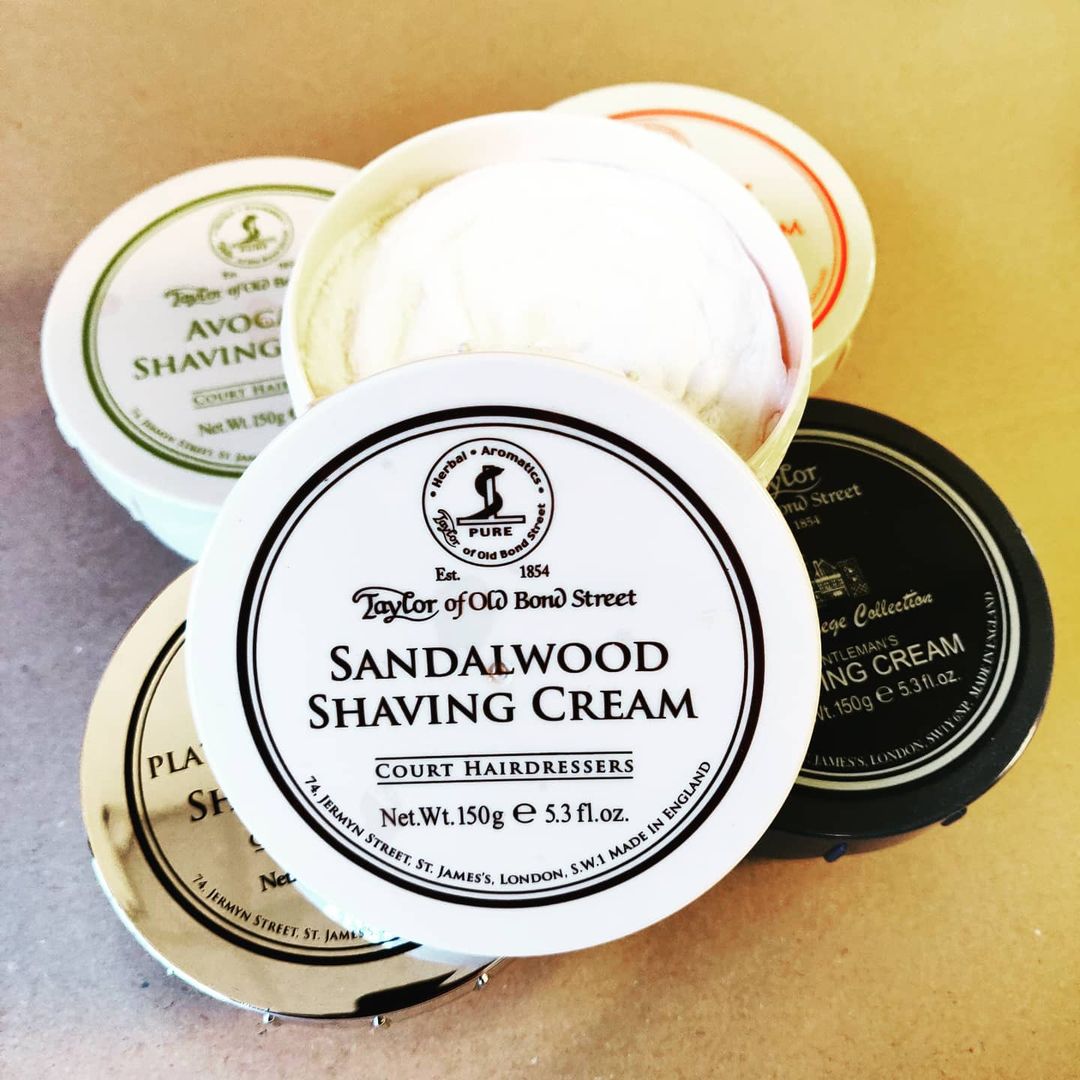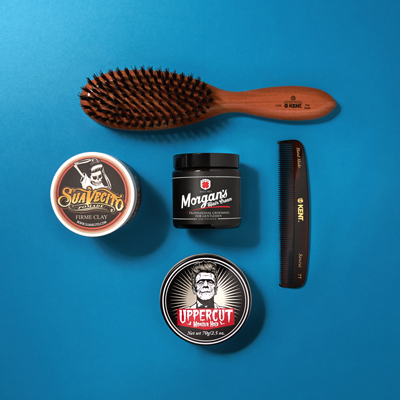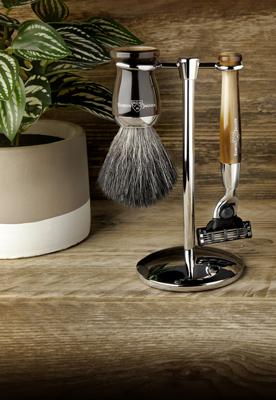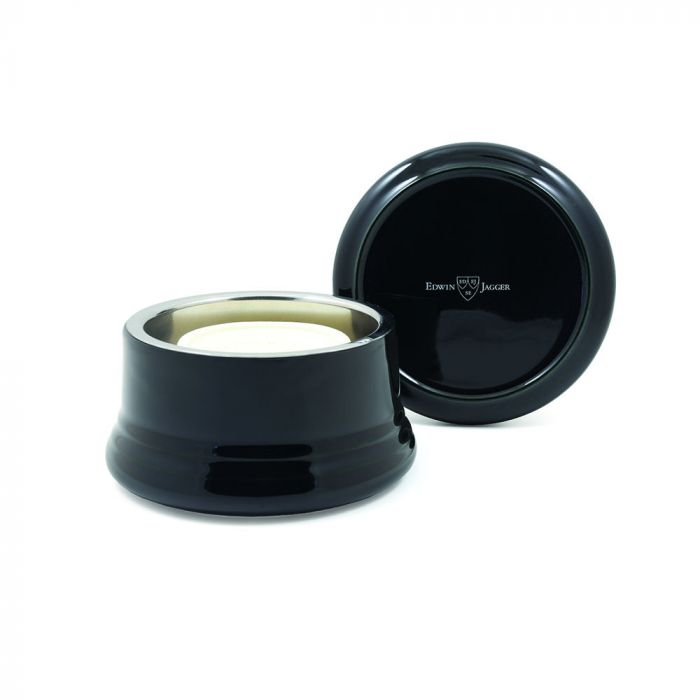Shaving with a Straight Razor (Tips and Advice)
Shaving with a straight razor is completely different to using a double edge safety razor, Fusion or Mach 3 and requires a steady hand and plenty of practice! This short guide offers the best tips and advice to help you shave with a straight razor, whether you’re just starting out or have been using one for years.
 If you have a professional straight shave, the barber will often place a hot towel on your face to soften the hairs. It’s important your facial hair is as soft as possible to minimise friction and create an easy shave. At home, you can run a flannel in hot water, squeeze it out and place on your face for a similar effect. Alternatively, you can shave after you shower.
It’s also important to use a quality shaving cream in order to further soften your hairs and protect your skin. You’ll need to use a quality shaving brush to lift the hairs from your face, allowing a close shave. We would recommend a badger hair brush as these are the most effective.
If you have a professional straight shave, the barber will often place a hot towel on your face to soften the hairs. It’s important your facial hair is as soft as possible to minimise friction and create an easy shave. At home, you can run a flannel in hot water, squeeze it out and place on your face for a similar effect. Alternatively, you can shave after you shower.
It’s also important to use a quality shaving cream in order to further soften your hairs and protect your skin. You’ll need to use a quality shaving brush to lift the hairs from your face, allowing a close shave. We would recommend a badger hair brush as these are the most effective.
 Honing your razor for the first time can seem intimidating, but it’s an important step to getting a good shave. It doesn’t take long to sharpen your blade once you’ve got the right technique, particularly if you keep you blade in good condition. Around 10 strokes should make it sharp enough.
It’s also vital to strop your blade. After honing, the blade will be far too rough to use on your face. Stropping it smooths it out and ensures it’s ready for you to use. Never rush this stage as it is necessary to keep your shave smooth and minimise irritation.
Read our full guide on how to care for your straight razor on our blog.
Honing your razor for the first time can seem intimidating, but it’s an important step to getting a good shave. It doesn’t take long to sharpen your blade once you’ve got the right technique, particularly if you keep you blade in good condition. Around 10 strokes should make it sharp enough.
It’s also vital to strop your blade. After honing, the blade will be far too rough to use on your face. Stropping it smooths it out and ensures it’s ready for you to use. Never rush this stage as it is necessary to keep your shave smooth and minimise irritation.
Read our full guide on how to care for your straight razor on our blog.
Straight Razors
Straight razors, which you may have heard called a cut throat razor or shavette (some variations use a disposable blade), used to be the only way men were able to shave. Before the invention of DE razors and Gillette cartridges, the majority of men strolled into town and had a professional shave from a barber. When safety razors were invented that were easier for men to use at home, the popularity of a straight razor shave started to fade. These days, you can get the best of both worlds: shaving with a straight razor in your own bathroom. (Why not read our blog on shaving rituals around the world? It's got loads of fun information about when straight razors first began to be used and where!) However, there’s a reason most men used to visit the barber; it takes a lot of practise to get it right and it’s more dangerous than using a safety razor. But when you master the technique, a straight razor can produce the one of the smoothest shaves out there. Shaving with a straight razor also has reduced costs. While the initial outlay might be more than some alternatives, it doesn’t need replacing. Just keep it sharp and it’ll last a lifetime. (It’s also important to note that straight razors make you feel 100% cooler.)Top Tips for Shaving with a Straight Razor
1. Choosing the Razor
When choosing your shavette or straight razor, it’s important to remember that you’re not looking for cheap; you’re looking for quality. A cheap straight razor can cause more trouble than they’re worth, leading to lots of nicks and cuts as well as producing an ineffective shave. It’s vital you choose one of high quality in order to make your straight razor shave as easy as possible. You need to consider: the quality of the steel, the blade’s width, and the amount of hollowing. A razor with a good quality steel temper is easier to sharpen and maintain, and you don’t want a blade that is too wide as it limits the control you have over your shave. Straight razors these days are created with a hollow that shapes the blade with concave edges -- and also gives it balance. The more concave the blade, the sharper it is. However, concave blades aren’t recommended for beginners as they can cut you much more easily and need to be handled with a lot of care.2. Prepare Properly
 If you have a professional straight shave, the barber will often place a hot towel on your face to soften the hairs. It’s important your facial hair is as soft as possible to minimise friction and create an easy shave. At home, you can run a flannel in hot water, squeeze it out and place on your face for a similar effect. Alternatively, you can shave after you shower.
It’s also important to use a quality shaving cream in order to further soften your hairs and protect your skin. You’ll need to use a quality shaving brush to lift the hairs from your face, allowing a close shave. We would recommend a badger hair brush as these are the most effective.
If you have a professional straight shave, the barber will often place a hot towel on your face to soften the hairs. It’s important your facial hair is as soft as possible to minimise friction and create an easy shave. At home, you can run a flannel in hot water, squeeze it out and place on your face for a similar effect. Alternatively, you can shave after you shower.
It’s also important to use a quality shaving cream in order to further soften your hairs and protect your skin. You’ll need to use a quality shaving brush to lift the hairs from your face, allowing a close shave. We would recommend a badger hair brush as these are the most effective.
3. Take your time
Straight razors aren’t for the impatient. You’re handling a very sharp object, which forces you to slow down and take your time. Don’t think this is a bad thing though; it’s part of the luxury of shaving with a straight razor. The discipline and time is takes is extremely relaxing and meditative.4. Keep it sharp
 Honing your razor for the first time can seem intimidating, but it’s an important step to getting a good shave. It doesn’t take long to sharpen your blade once you’ve got the right technique, particularly if you keep you blade in good condition. Around 10 strokes should make it sharp enough.
It’s also vital to strop your blade. After honing, the blade will be far too rough to use on your face. Stropping it smooths it out and ensures it’s ready for you to use. Never rush this stage as it is necessary to keep your shave smooth and minimise irritation.
Read our full guide on how to care for your straight razor on our blog.
Honing your razor for the first time can seem intimidating, but it’s an important step to getting a good shave. It doesn’t take long to sharpen your blade once you’ve got the right technique, particularly if you keep you blade in good condition. Around 10 strokes should make it sharp enough.
It’s also vital to strop your blade. After honing, the blade will be far too rough to use on your face. Stropping it smooths it out and ensures it’s ready for you to use. Never rush this stage as it is necessary to keep your shave smooth and minimise irritation.
Read our full guide on how to care for your straight razor on our blog.



